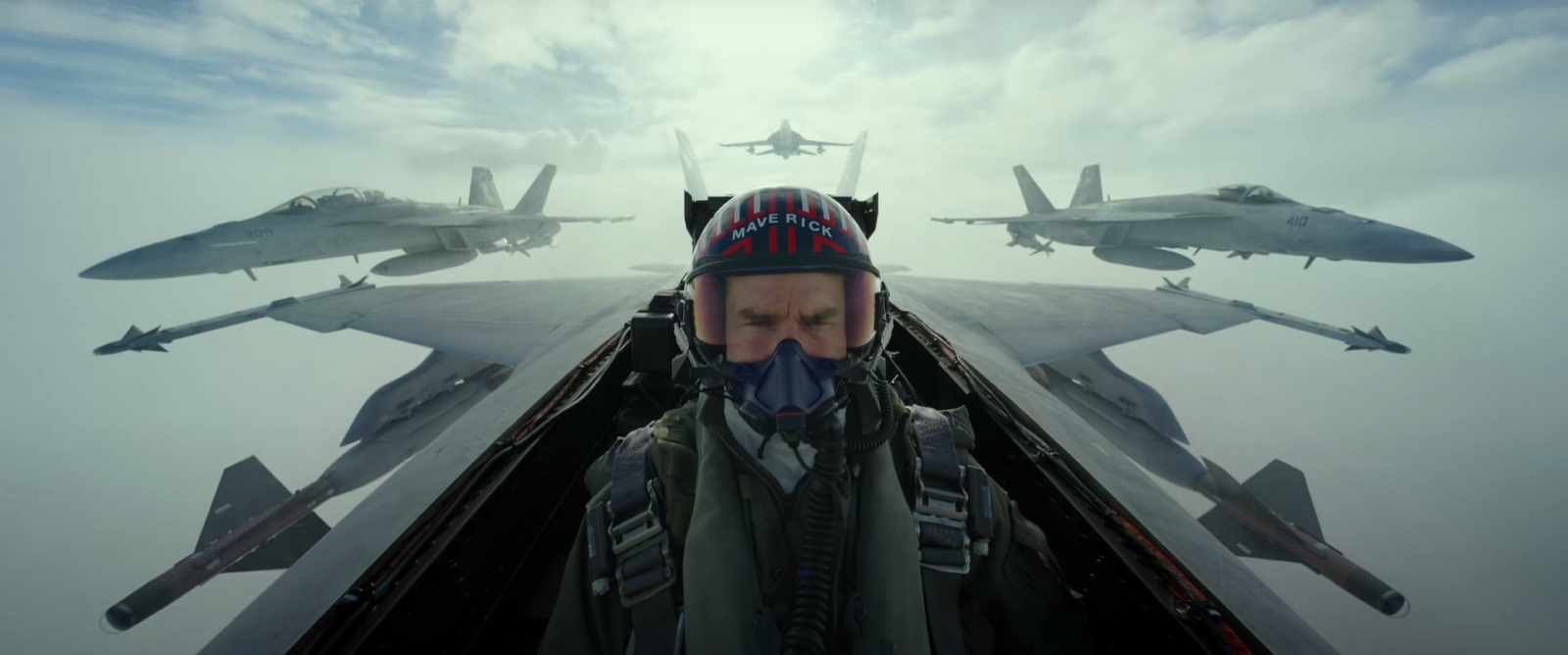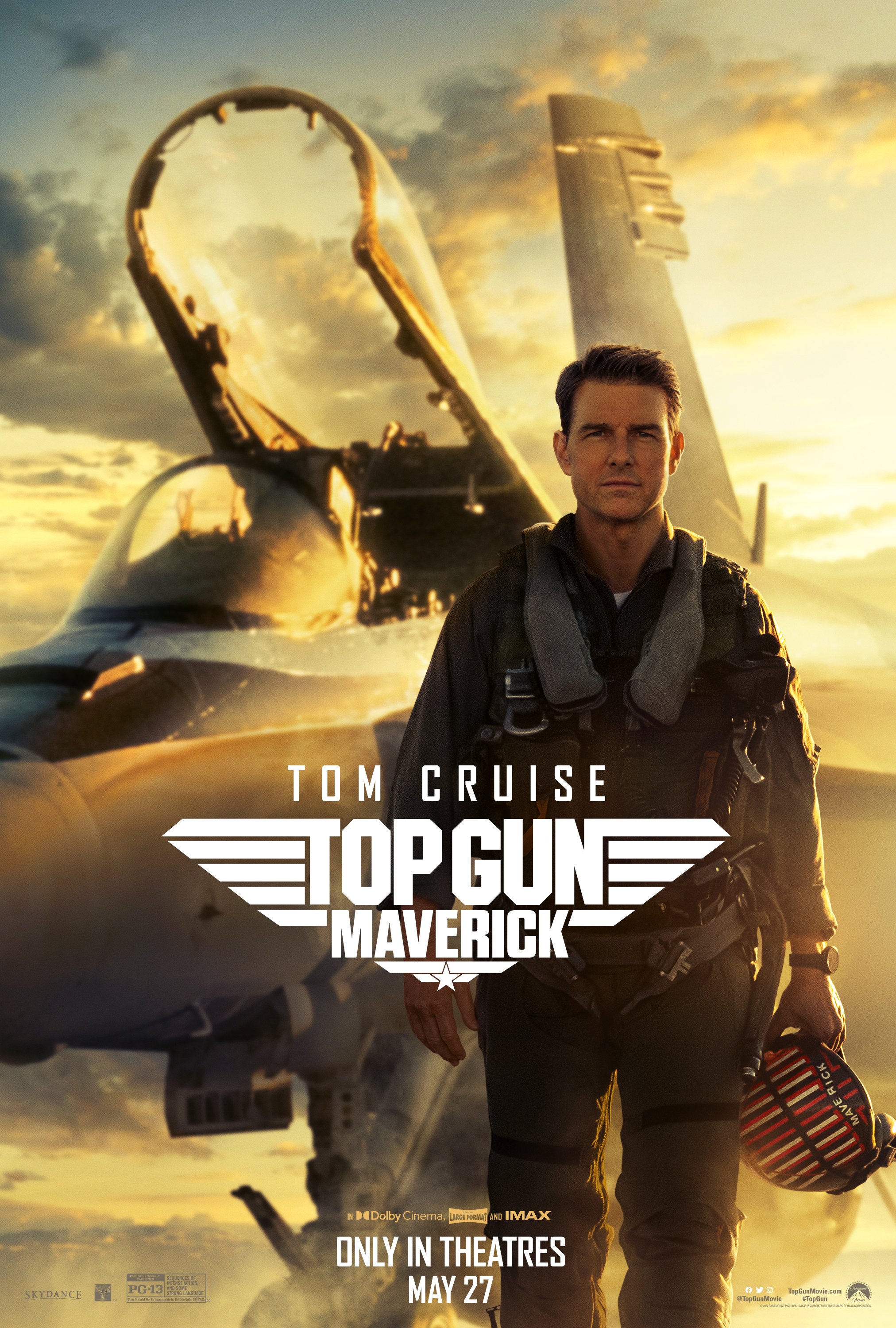Top Gun: Maverick
/I’ve only seen the original Top Gun once. Twenty years ago, around the time I graduated from high school. And I fell asleep during part of it. So my anticipation of Top Gun: Maverick has less to do with nostalgia and more to do with my lifelong interest in military aviation and action movies and my more recent esteem for Tom Cruise’s action career.
It was worth the wait. And while I can’t make any direct comparison to the original, I’d be willing to bet Maverick, this much later sequel, is actually the better movie.
Top Gun: Maverick opens with Capt. Pete “Maverick” Mitchell (Tom Cruise) working as a test pilot, pushing the envelope with an experimental prototype. When the contract for the prototype is terminated and the program shut down, Maverick is saved—not for the first time—from discharge by the intervention of Iceman (Val Kilmer), who is now commander of the US Pacific Fleet. Ice has Maverick reassigned to their old flight school in San Diego, where he is tasked with training a batch of previous graduates for a specific, extremely difficult mission.
An unnamed “rogue state” is nearing completion of a high-tech uranium refinement facility. It is imperative that the facility be destroyed; it is almost impossible to reach it. The lab lies underground at the bottom of a narrow valley hemmed in on either side by steep mountains, and the mountains are topped by SAM sites.
Maverick develops a training regimen designed to push the younger pilots selected for the mission—who are already the best of the best—to their limits and force them to accept that they still have things to learn. He tests their skills, confidence, and endurance as well as their teamwork. Though still a daredevil and risk-taker, Maverick was chastened by the death of his partner Goose in the first film, and the presence of Goose’s son Rooster (Miles Teller) among his trainees renews this old guilt.
The personal dimension is further complicated by Maverick’s reacquaintance with Penny (Jennifer Connelly), an old flame who runs the aviators’ dive bar nearby, and by the hostility or distrust of many of Maverick’s superiors. Maverick awkwardly reconnects with the former, and struggles to avoid being grounded by the latter.
I don’t want to say much more about the plot. It will come as no surprise that Maverick not only trains the young pilots but ends up leading the mission, but there are other surprises in store and a lot of good action along the way.
The story of Top Gun: Maverick is simple but effectively told. This movie exists within a long, grand tradition of military mission movies in which elite units have to rise above even their own excellence to achieve an impossible objective with very narrow parameters for success: think The Dam Busters. What makes the movie work is not a convoluted story with numerous subplots or bloated action sequences, but efficient, well-paced storytelling, good acting, and exciting action. This film does what all great films of this genre do: make the challenges, stakes, and threats clear, make the action meaningful by giving us characters to care about, and then present the climactic action comprehensibly and suspensefully.
The strongest character in the movie, by far, is Maverick. In addition to being a plot-driven action adventure this film is a character piece, and Tom Cruise, proving he need not be limited to motorcycle chases and sprinting, does a very good job giving depth to an erstwhile hotshot as he confronts age and the danger inherent to his work. This Maverick begins the movie as an expert loner with a callous disregard for danger and has to learn—through his trainees, through Penny and her daughter—that men ultimately derive meaning and purpose not only from vocation and leadership but attachment.
The supporting cast is less well developed but not one-dimensional. Jon Hamm and Jennifer Connelly are good as Maverick’s antagonistic commander at Top Gun and Maverick’s love interest, respectively, and giving depth and personality to characters it would be easy to play as clichés. The standout among the trainees is Goose’s son Rooster, who gets the most substantial writing among them and is well-performed by Miles Teller. The other pilots have essentially one personality trait but still feel like real people we could feasibly get to know better, a testament to the actors cast in those parts.
But Top Gun: Maverick’s big selling point—and my main interest going into the movie—is the action. Most of the aerial sequences were shot with the actors really sitting in real F/A-18 Super Hornets (and one F-14 Tomcat) really doing the things they purport to be doing in the movie, and the result is a series of flight scenes that convey the speed and G-forces and general danger of fighter combat as well as the amazing skill of a seasoned pilot. One reason the action works so well is that it’s comprehensible—director Joseph Kosinski stages the action so that we see and understand what’s going on. The action is also helped by the writing. Key moments in the finale are properly set up during training, so that by the time the climactic action is unfolding at supersonic speed we grasp what’s happening intuitively. It’s excellently done.
In the end, I found Top Gun: Maverick not only enjoyable and exciting but refreshing. It’s a throwback in the best ways possible, and not just stylistically—though it does a good job emulating the golden-hued long-lens cinematography of the original and includes just enough 80s music to be fun without being cloying. More importantly, it’s not cynical, has good characters and a dash of humor, doesn’t overstay its welcome, doesn’t pander to the present-day political sensibilities being shoehorned into every other entertainment being shoveled our way, tells a good strong story straightforwardly, is undergirded by some positive and goodness-affirming themes that arise organically from the plot, and has a genuine feel-good quality that makes it a joy to watch with an audience.
Top Gun: Maverick is not deep, but it’s well-crafted and engaging and pure, solid fun. When I saw it last night, people gasped, laughed, and applauded unironically, and that only enhanced it. I look forward to watching it again.






